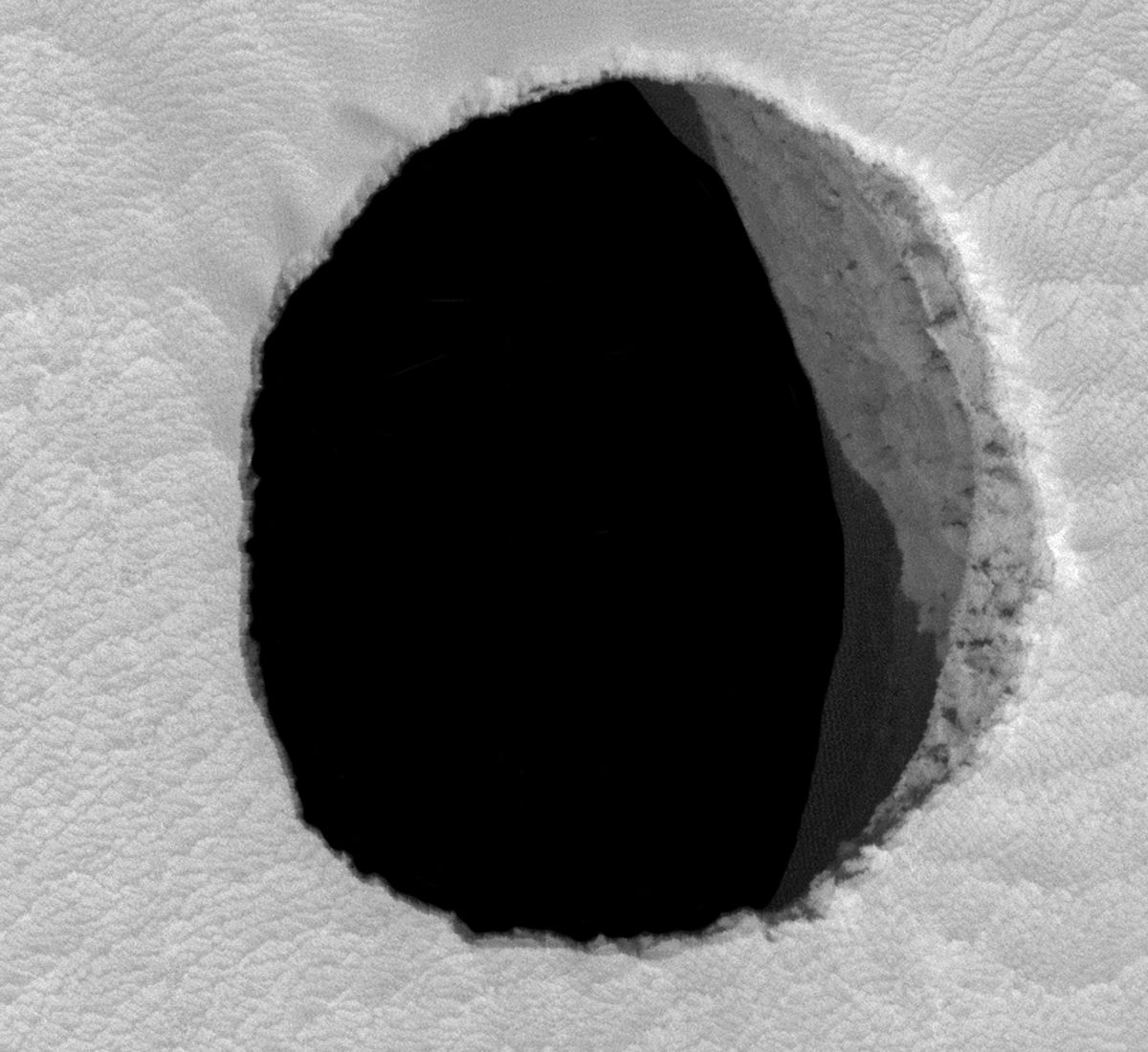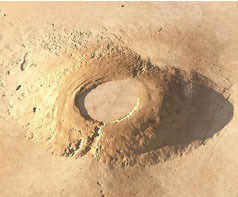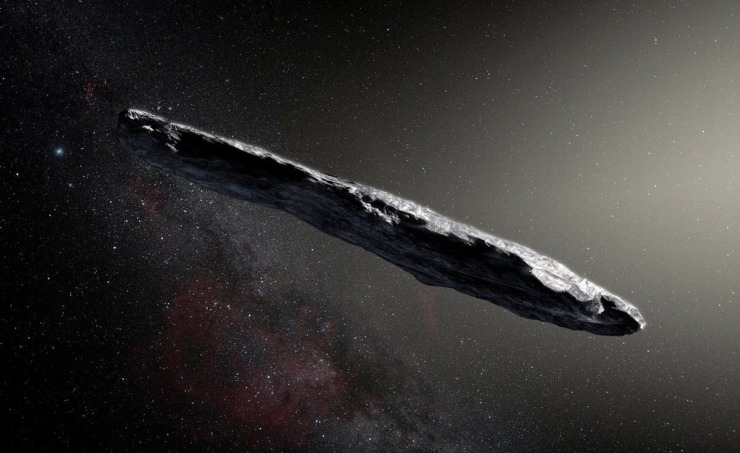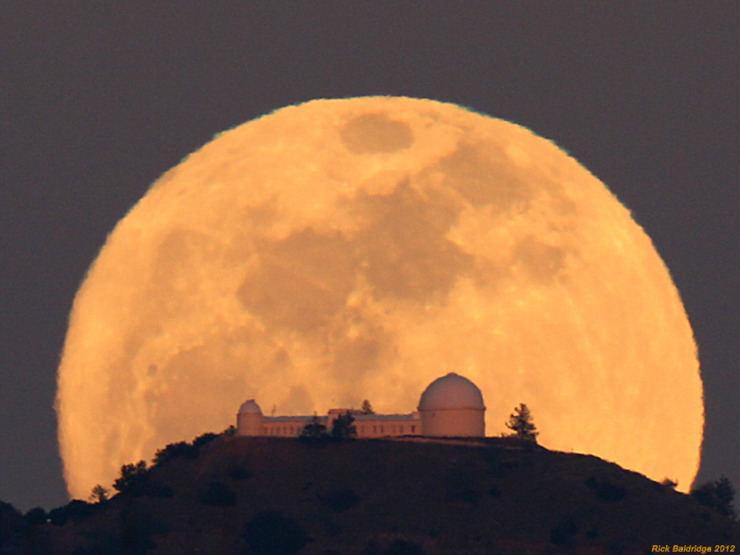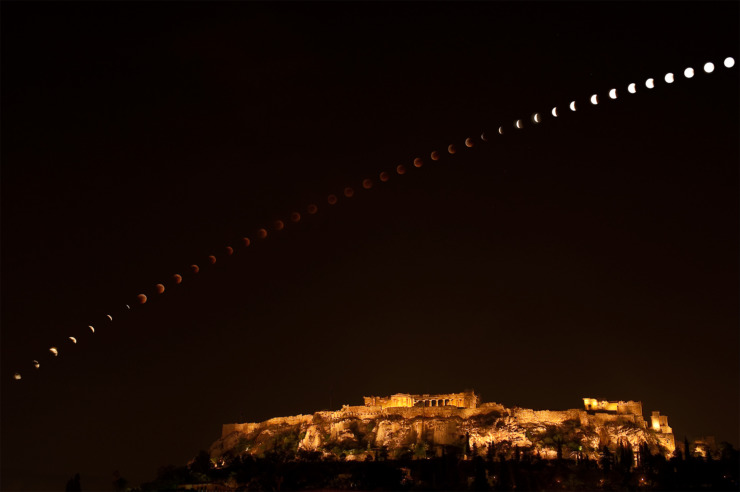Recently, in social media posts, Dr. Pascal Lee of the SETI Institute discussed the intriguing caves on the side of the giant martian volcano called Arsia Mons as interesting places for future exploration and even human residences. As it happens, my very first published science-fiction story, “The Cave in Arsia Mons,” in a 2015 anthology was about one of those caves and a remarkable discovery that is made in it. You can read it free at https://bit.ly/fraknoicave
In the accompanying photos you can see a closeup of one of these cave openings (it’s an old lava tube where the lava is long gone.) This opening is about 500 feet across, and from the shadow, geologists estimate that the cave is at least 600 feet deep, and could be much deeper. The other image shows you the entire (giant) Arsia Mons volcano, some 270 miles in diameter, and towering about 6 miles above the plateau from which it rises.
Since the air pressure on Mars is very low, and the martian air does not include significant oxygen, any future Mars settlers will have to live in pressurized environments. Most people envision some kind of domed city, but it might be that part of a cave could be sealed and pressurized at lower cost.
The U.S. Geological Survey, a few years ago, cataloged the locations of more than a thousand cave-entrance candidates on Mars. So settlers may have their choice of real estate.

